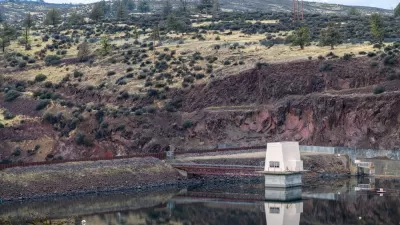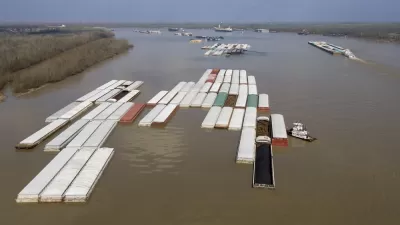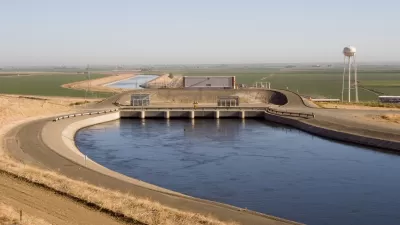Without concerted restoration efforts, the river’s historically low levels could dramatically impact shipping activities and economic development throughout the region.

The once ‘mighty’ Mississippi River, whose watershed covers 41 percent of the lower 48 states, is running dry. Writing for American Rivers, Amy Souers Kober reports on the crisis, which is already disrupting goods movement, tourism, and other economic activity along the river.
Home to 241 fish species, 50 species of mammals, and 45 species of amphibians, the Mississippi is a key habitat for resident and migratory animals. Last month, the river hit record low levels, hindering shipping activities and even endangering drinking water supplies. Scientists who study the river expect that climate change will mean less rainfall across the river basin.
If passed by Congress, the Mississippi River Restoration and Resilience Initiative would fund a federal program focused on conservation and restoration of the river. Representative Betty McCollum, who sponsored the legislation, said in a statement on her website, “This initiative will coordinate efforts on conservation and environmental restoration along the entire river corridor and open up grant opportunities for state and local governments, tribes, and nonprofit organizations.”
FULL STORY: The mighty Mississippi running dry: what you need to know

Study: Maui’s Plan to Convert Vacation Rentals to Long-Term Housing Could Cause Nearly $1 Billion Economic Loss
The plan would reduce visitor accommodation by 25,% resulting in 1,900 jobs lost.

North Texas Transit Leaders Tout Benefits of TOD for Growing Region
At a summit focused on transit-oriented development, policymakers discussed how North Texas’ expanded light rail system can serve as a tool for economic growth.

Why Should We Subsidize Public Transportation?
Many public transit agencies face financial stress due to rising costs, declining fare revenue, and declining subsidies. Transit advocates must provide a strong business case for increasing public transit funding.

How Community Science Connects People, Parks, and Biodiversity
Community science engages people of all backgrounds in documenting local biodiversity, strengthening connections to nature, and contributing to global efforts like the City Nature Challenge to build a more inclusive and resilient future.

Alabama: Trump Terminates Settlements for Black Communities Harmed By Raw Sewage
Trump deemed the landmark civil rights agreement “illegal DEI and environmental justice policy.”

Dear Tesla Driver: “It’s not You, It’s Him.”
Amidst a booming bumper sticker industry, one writer offers solace to those asking, “Does this car make me look fascist?”
Urban Design for Planners 1: Software Tools
This six-course series explores essential urban design concepts using open source software and equips planners with the tools they need to participate fully in the urban design process.
Planning for Universal Design
Learn the tools for implementing Universal Design in planning regulations.
City of Santa Clarita
Ascent Environmental
Institute for Housing and Urban Development Studies (IHS)
City of Grandview
Harvard GSD Executive Education
Toledo-Lucas County Plan Commissions
Salt Lake City
NYU Wagner Graduate School of Public Service





























